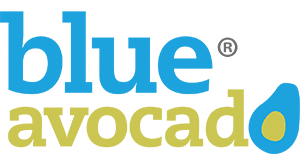Re-Imagining Fundraising: How Funder Education and Systemic-Change Approaches are Changing the Game
Exploring solutions to the mismatches with donor interests and funders’ reluctance to invest that keep the work of advocacy and systemic change chronically underfunded.

If traditional funders want to disrupt racism, close opportunity gaps, or advance social justice, they need to support missions that build community power through advocacy.
I’ll never forget walking into the library of an immigrant-serving early childhood and adult literacy education program in Boston’s MetroWest suburbs for a board meeting on a cloudy day in May. The building was eerily quiet. Gone was the usual bustle of cafeteria conversations, art therapy sessions, and preschool book readings.
Only one family, recently arrived from Russia, had come to school that day. The rest had stayed home after a video circulated through local Latinx family group chats that morning showing ICE agents in masks and plainclothes violently smashing a Latino man’s car window and dragging him out in handcuffs a mere 500 feet down the street.
Earlier in the year, the program was forced to rapidly redesign its signature annual event to safeguard local families’ safety, privacy, and dignity. If there was any doubt left in my mind about the need to operationalize a new paradigm for running nonprofits within today’s uniquely treacherous political climate for historically marginalized communities in the United States, that day in May extinguished it.
In an era when federal policies are tearing families apart; undermining the health and safety of immigrants, women, LGBTQ+ people, and communities of color; and leaving veterans and the working class with the remaining shreds of what was once a stabilizing social safety net, the social sector faces a stark choice: Do we stick with what’s safe and familiar, or do we rise to meet the moment with bold, community-led action and an unapologetic focus on fixing broken systems?
What the world and our sector need now is a radical realignment of grassroots power: Systemic transformations that situate the perspectives, needs, and agency of the communities we serve at the center of everything we do.
Nonprofit fundraisers possess a distinctively liminal capability: They communicate fluently and code-switch naturally between the language of the proletariat and that of the elite. Their dual legibility to both constituents and decision-makers positions them as powerful advocates for (and educators of) distributive justice.
Unfortunately, this bridging role remains severely under-leveraged, considering fundraisers’ remarkable capacity for shifting philanthropic resources to communities and programs in a way that optimizes social benefit, cost-effectiveness, and equity like few others can.
Grassroots organizing and policy advocacy organizations have picked up the slack, but lack the capacity to scale their impact. Persistent, structural mismatches with donor interests and many funders’ reluctance to invest in the work of advocacy and systemic change keeps them chronically underfunded.
During my tenure as the Director of Development and Communications at a Boston-based disability rights organization, I witnessed the remarkable returns-on-investment of local grassroots organizing programs materializing.
In under a decade, the organization and its coalition partners increased annual state funding for affordable, accessible housing vouchers for economically disadvantaged people with disabilities from under $4 million to over $26 million, as of December 2024.
A skeleton crew, operating on a shoestring budget, produced transformative statewide outcomes with an economic valuation that far exceeds the organization’s annual advocacy budget of under $350,000, as of December 2024, and even lower in preceding years.
The most conservative estimate of the campaign’s return-on-investment over its lifetime exceeds 600% — not accounting for the diverse, cost-saving, and productivity-enhancing benefits realized by the Commonwealth of Massachusetts as a direct result of the housing situations of thousands of its residents stabilizing.
Yet, despite the magnitude of its impact, far too many donors remain hesitant to support such critical work.
In my and my colleagues’ experience, the greatest resistance to supporting disabled-led advocacy campaigns didn’t stem from ideological opposition. Rather, it was rooted in confusion, risk aversion, and myths about what is and isn’t allowed under IRS regulations — particularly around lobbying and gift size.
Even sophisticated funders worry about the risk of “tipping” smaller, grassroots nonprofits into private foundation status, which imposes far more onerous tax-reporting requirements on organizations than public charity status, through philanthropic contributions large enough to fail the “public support test.” This is a uniquely challenging issue for advocacy groups, which rely significantly on unrestricted and multi-year gifts to operate sustainably.
This makes the education of individual, corporate, and institutional funders a critical area for intervention. Fundraisers — adept at code-switching between the trust-based vernacular of the community and the jargon of policy and privilege — can demystify advocacy by providing clear, accurate, and trusted guidance on the distinction between advocacy and lobbying, the legally permitted scope of nonprofit engagement in public policy, and the many ways foundations can (and do) fund this work without significant regulatory risk.
Increasingly, organizations like the Alliance for Justice and their Bolder Advocacy program are formalizing best practices by offering actionable frameworks, capacity-development resources, and professional development opportunities to help both grantees and funders confidently navigate the regulatory requirements of funding advocacy.
A 2023 panel I co-organized with the Social Innovation Forum in Boston convened grassroots community-organizing nonprofits and their funders to discuss the innovative and generative funding models they co-created with one another.
Reports published by funder networks like Grantmakers in Health and GEO, as well as consultancies like Bridgespan and the University of Pennsylvania’s Center for High Impact Philanthropy, are filled with success stories of the many ways funder-advocate partnerships can go right.
Moreover, as in the case of my former employer, advocacy is often the highest-yield investment a funder can make. Unlike direct-service dollars, which address the symptoms of systemic inequality, advocacy dollars operate upstream to tackle its root causes.
The impact of a successful advocacy campaign is felt across entire populations because of structural transformations in the way societal resources are allocated. When public policy shifts (whether by budget reallocation, legislation, or rule-making), it can unlock massive, compounding returns that can produce local, national, or even global ripple effects over wide time horizons.
If traditional funders want to get serious about disrupting racism, closing opportunity gaps, or advancing social justice, they should seriously consider their stance on supporting missions that build community power through advocacy.
The traditional playbook of top-down command and control is not only obsolete, but actively harming populations simultaneously experiencing the greatest levels of need and the least access to resources that can meet that need.
But, in order to co-author a brave new chapter, funders and advocacy groups alike need to feel safe to engage with each other. That’s where fundraisers (as translators of wisdom between grassroots lived experience and the jargon of policy and privilege) come in.
Nonprofit development professionals who can successfully coach funders through the legal boundaries and moral imperatives of investing in systemic change work have the potential to fundamentally reshape the philanthropic landscape to prioritize the voices and communities at the center of it.
You might also like:
- The Million-Dollar Question: What Could Your Nonprofit Do if Money Weren’t an Issue?
- The Ultimate Guide to Nonprofit Fundraising in 2025
- The Best Route to Approaching Donors: Hand-Head-Heart
- Your Nonprofit Got its Grant. Now What?
- Nonprofit Fundraising: Are You Choosing the Right Grants?
You made it to the end! Please share this article!
Let’s help other nonprofit leaders succeed! Consider sharing this article with your friends and colleagues via email or social media.
About the Author
Noel Martin Rubio, CFRE, is a development and communications strategist, narrative architect, and the founder of Future Tense Strategies, a consulting firm that helps socially impactful organizations unlock funding, tell better stories by centering community wisdom and leadership, and build power at the grassroots.
With nearly a decade of experience in nonprofit fundraising, public policy, economic development and global health, Noel has helped to raise more than $13.5 million for disability justice, immigrant rights, legal aid, community development, and youth arts initiatives in four continents.
Noel’s work sits at the intersection of systems change and fundraising strategy, with a focus on demystifying funder dynamics and amplifying frontline wisdom. He studied public policy at the University of Chicago and is currently enrolled in MIT’s graduate-level certificate program in Data, Economics, and Design of Policy.
You can connect with him and follow Future Tense Strategies on LinkedIn.
Articles on Blue Avocado do not provide legal representation or legal advice and should not be used as a substitute for advice or legal counsel. Blue Avocado provides space for the nonprofit sector to express new ideas. The opinions and views expressed in this article are solely those of the authors. They do not purport to reflect or imply the opinions or views of Blue Avocado, its publisher, or affiliated organizations. Blue Avocado, its publisher, and affiliated organizations are not liable for website visitors’ use of the content on Blue Avocado nor for visitors’ decisions about using the Blue Avocado website.








Thank you for bringing this conversation forward, Noel! It was as if you were outlining the very work that my nonprofit does. It is very difficult to secure funding for our advocacy work, although the advocacy work brings in more resources and results than anything else.
Thanks for your kind and thoughtful note, Kim! The mismatch between advocacy’s impact and the continued hesitancy to fund it is exactly why I wrote this piece. Your organization’s experience demonstrates the urgency that we, as fundraisers and advocates, must act with in order to help funders better understand the stakes of this conversation. Would love to stay connected and learn more about your work; more power to you as you navigate the complex and shifting challenges that so many others working in our space are facing too.